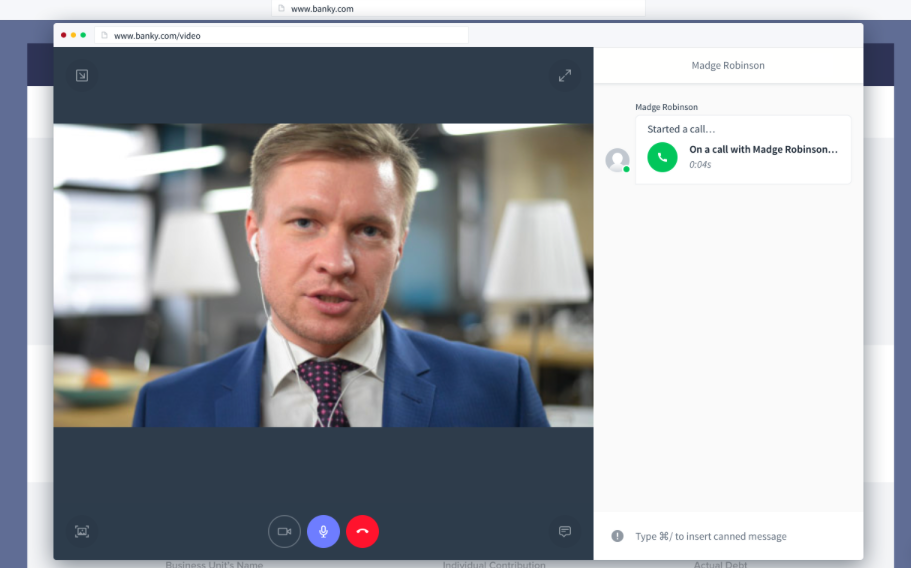Over the past two decades, Jeff Bezos’s annual letters to stakeholders reflect the mindset and insight driving the company’s meteoric rise to a trillion-dollar company. Every letter consistently outlines a relentless focus on the customer’s experience. At unblu, we think these letters are required reading for the financial industry, providing deep thinking and advice that can be applied to building a customer-centric bank. Below is a short collection of Bezos maxims from over the years that ultimately illustrate the company’s understanding of their customers. You can read the whole collection of letters (1997-2018) here.
From 1998: Be terrified of your customers, not your competition
“I constantly remind our employees to be afraid, to wake up every morning terrified. Not of our competition, but of our customers. Our customers have made our business what it is, they are the ones with whom we have a relationship, and they are the ones to whom we owe a great obligation. And we consider them to be loyal to us — right up until the second that someone else offers them a better service.”
From 2012: Don’t wait for external pressures to make things better
“One advantage — perhaps a somewhat subtle one — of a customer-driven focus is that it aids a certain type of proactivity. When we’re at our best, we don’t wait for external pressures. We are internally driven to improve our services, adding benefits and features, before we have to. We lower prices and increase value for customers before we have to. We invent before we have to. These investments are motivated by customer focus rather than by reaction to competition. We think this approach earns more trust with customers and drives rapid improvements in customer experience.”
From 2016: Customers are perennially dissatisfied – so be relentless about delighting your customer
“Customers are always beautifully, wonderfully dissatisfied, even when they report being happy and business is great. Even when they don’t yet know it, customers want something better, and your desire to delight customers will drive you to invent on their behalf. No customer ever asked Amazon to create the Prime membership program, but it sure turns out they wanted it.”
Resist proxies: don’t let process become the proxy for customers
“As companies get larger and more complex, there’s a tendency to manage to proxies. A common example is process as proxy. Good process serves you, so you can serve customers. But if you’re not watchful, the process can become the thing. This can happen very easily in large organizations. The process becomes the proxy for the result you want. You stop looking at outcomes and just make sure you’re doing the process right. Gulp… The process is not the thing. It’s always worth asking, do we own the process or does the process own us? Another example: market research and customer surveys can become proxies for customers – something that’s especially dangerous when you’re inventing and designing products.”
“Good inventors and designers deeply understand their customer. They spend tremendous energy developing that intuition. They study and understand many anecdotes rather than only the averages you’ll find on surveys. They live with the design… A remarkable customer experience starts with heart, intuition, curiosity, play, guts, taste. You won’t find any of it in a survey.”
From 2016: Make high-velocity decisions
“Most decisions should probably be made with somewhere around 70% of the information you wish you had. If you wait for 90%, in most cases, you’re probably being slow. Plus, either way, you need to be good at quickly recognizing and correcting bad decisions. If you’re good at course correcting, being wrong may be less costly than you think, whereas being slow is going to be expensive for sure.”
From 2017: Build a culture of high standards
“How do you stay ahead of ever-rising customer expectations? There’s no single way to do it – it’s a combination of many things. But high standards (widely deployed and at all levels of detail) are certainly a big part of it.”
“Building a culture of high standards is well worth the effort, and there are many benefits. Naturally and most obviously, you’re going to build better products and services for customers – this would be reason enough! Perhaps a little less obvious: people are drawn to high standards – they help with recruiting and retention. More subtle: a culture of high standards is protective of all the “invisible” but crucial work that goes on in every company. I’m talking about the work that no one sees. The work that gets done when no one is watching. In a high standards culture, doing that work well is its own reward – it’s part of what it means to be a professional. And finally, high standards are fun! Once you’ve tasted high standards, there’s no going back.”
Satisfaction, moreover dissatisfaction, as Bezos says in his latest stakeholder letter, can be the best motivation for growth: “We didn’t ascend from our hunter-gatherer days by being satisfied. People have a voracious appetite for a better way.” Banks can apply Bezos’ ethos of customer experience by removing every source of friction and delighting customers with what they didn’t know they wanted. That may need eliminating the need to physically visit the branch or cutting back on wait times for loan applications or new bank accounts. It may mean more personal things – like offering advice that will save them money down the road. Finally, banks should aim to offer these experiences as easily and comfortably as a service from Amazon. Then they will be on the road to finding a better way.




 Interaction Management Hub
Interaction Management Hub Secure Messenger
Secure Messenger Video & Voice
Video & Voice



